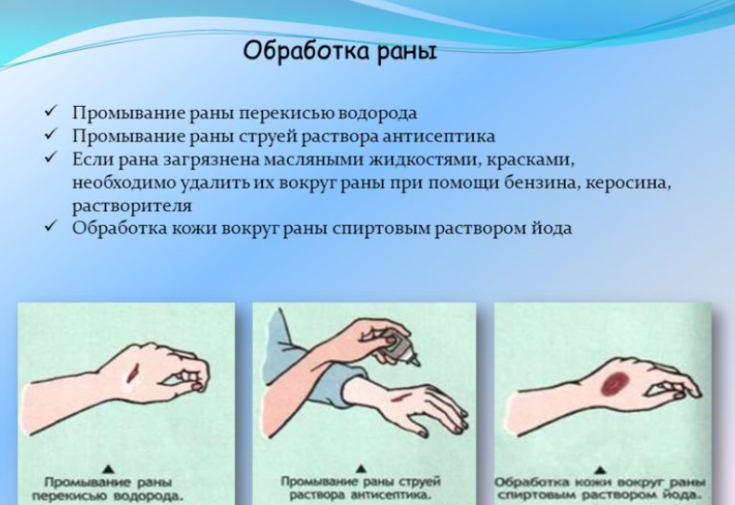The treatment of chronic and acute wounds has changed significantly over the past decade; however, minimal attention has been given to the types of solutions used to clean wounds.
The wound cleaning process involves the application of a non-toxic fluid to remove dirt, exudate, and metabolic waste to create an optimal environment for wound healing. Various remedies have been recommended by clinicians and manufacturers for their supposed therapeutic value.
There has been much debate in clinical circles about the potential advantages and disadvantages of exudate debridement, as the exudate itself may contain growth factors and chemokines that promote wound healing. However, the literature also suggests that large numbers of bacteria may interfere with wound healing due to the release of proteases.
In the article estet-portal.com you can learn in detail the recommended solutions for washing wounds. The information is based on the results of randomized clinical trials.
Available wound lavage
Preparations with antiseptic properties have traditionally been used, but published studies using animal models have shown that antiseptic solutions can interfere with the healing process. The controversy surrounding the use of antiseptics has prompted wound care experts to develop guidelines for the use of antiseptics.
Physiological saline (0.9%) is the preferred wound cleaning solution because it is isotonic and does not interfere with the normal healing process, does not damage tissue, does not cause sensitization or allergy, and does not alter normal bacterial flora of the skin.
Tap water is also recommended and has the benefits of efficiency, cost effectiveness and availability. However, physicians have been warned against using tap water to clean wounds that expose bone or tendons, in which case saline is recommended.
Follow us on Facebook
What can actually be used to wash wounds
The authors included 11 trials in this review. For chronic wounds, the risk of infection with cleaning with tap water versus saline was 0.16 (95% CI 0.01 to 2.96), demonstrating no difference between the two groups.
The use of tap water to cleanse acute wounds in adults and children was not associated with a statistically significant difference in infection compared with saline (adults: 0.66, 95% CI 0.42 to 1.04; children: 1 .07, 95% CI 0.43 to 2.64).

The authors found no statistically significant difference in infection rates when wounds were cleaned with tap water or not cleaned at all (RR 1.06, 95% CI 0.07 to 16.50).
Similarly, there was no difference in infection rates in episiotomy wounds cleaned with water or procaine alcohol.
The use of isotonic saline, distilled water, and boiled water to clean open fractures also did not show a statistically significant difference in the number of infected fractures.
There is no evidence that using tap water to clean wounds in adults and children increases or decreases infection.
There is no conclusive evidence that wound cleansing alone increases healing or reduces infection. If tap water is not available, boiled and chilled water, as well as distilled water, can be used as a cleanser for wounds.
Thank you for staying with estet-portal.com. Read other interesting articles in the "Plastic Surgery" section. You may be interested in Drainage of wounds in plastic surgery: is there a need







Add a comment